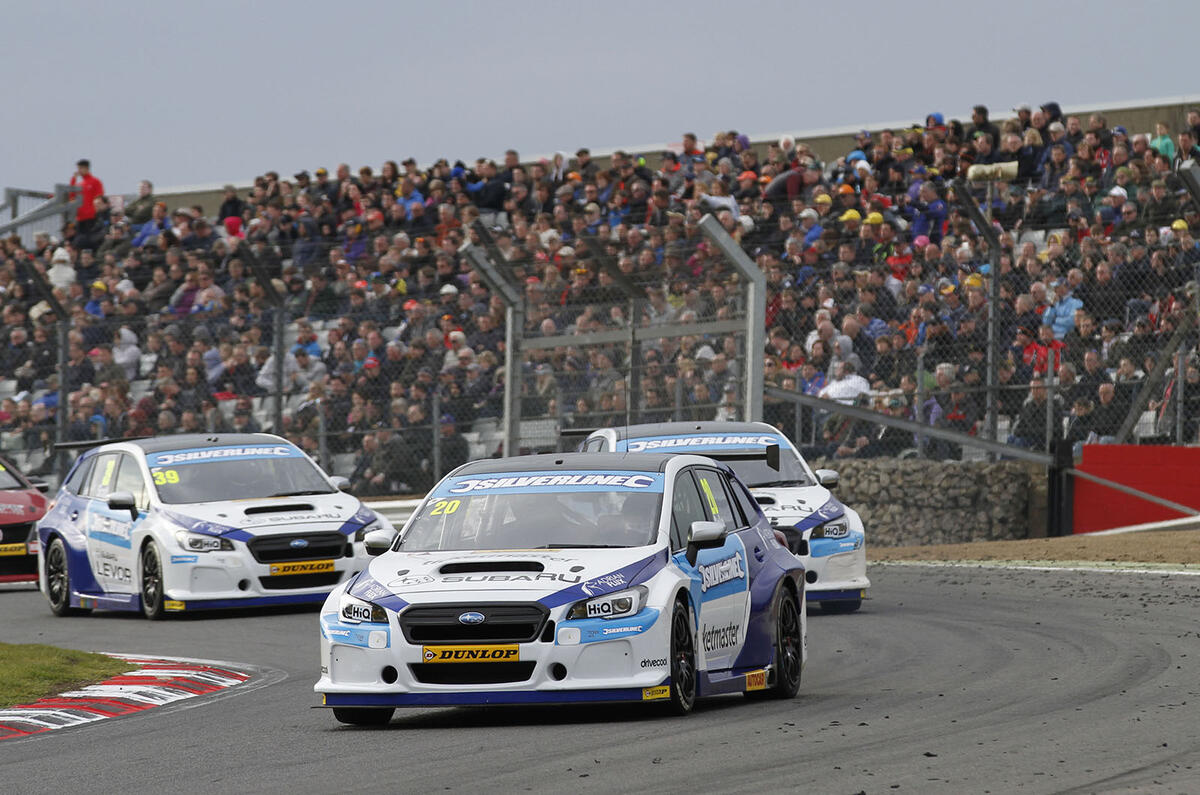Now the opening rounds of the 2016 Dunlop MSA British Touring Car Championship at Brands Hatch are behind us, teams and drivers will have a rough idea of their place in the pecking order. There will be some smiles and there will be some frowns.
And aside from engineering developments at the track, it is extremely hard for a team-driver combination to make significant strides over the course of the next 27 races.
To make sure that budgets don’t spiral out of control, officials in the BTCC insist that teams don’t take part in more than four days of testing during the course of the campaign.
That means that the teams have their cars pretty much locked down from the start of the season. If it isn’t spot on at the start of the year, there isn’t much room for manoeuvre.
Teams with newly designed cars, such as the Team BMR Subaru Levorg squad this year, are allowed those four days plus five extra ones while they get to grips with those machines.
Read Autocar's review of the Subaru Levorg
Those extra days will be vital for Subaru. While drivers Jason Plato and Colin Turkington both managed to score points during the opening three races of the campaign on 3 April with a 12th and a 13th place finish, there is still an awful lot of work to be done to get them to the very front of the field.
The team will take its time before using any of its test days. Firstly, it will take a while to assess the data. Because the car was so new (it had only taken part in a 15-minute shakedown at Brands Hatch on the Friday before the event), each of the team’s four drivers – including team principal Warren Scott and James Cole – ran differing set-ups across each session and in the three races.
So that's as many as 24 sets of data to compare. And then, once that has been established, there is the time needed to create any new parts for the car that it might deem necessary and test them. Donington takes place on 16-17 April, leaving very little for time for anything meaningful to happen.
Why Subaru is racing in the BTCC
This was only the car’s first outing and the engine is not yet at full power, as was clear from the speed trap times. The rear-wheel-drive Levorg was almost 5mph slower across the start-finish line at Brands than the rest.
Basing any fundamental changes on a car that isn’t yet fully up to speed power-wise would be foolish. So gaining more data from the next three meetings is probably more crucial than trying to rush through quick fixes that might not work in the longer term.
But there was something more important than any of that. What the team needed most, after Brands Hatch, was rest. Building up four cars in 87 days is unprecedented and there aren’t many squads that could have done that.
The team will be refreshed at Donington Park next weekend, they will have a bank of knowledge from the data and they will be more familiar with the new beast that they are working on.
The first steps might seem like small ones, but they are vitally important as the three-year programme comes to life.




Join the debate
Add your comment
Oh, are we all drifting back
Sandbagging ?
You're right.
And it has become the rule for the major part in motorsports in the 21th century...
OK, the races are surely more equilibrated, but we have lost the disversity in motorsports...